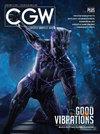Procedural Shape Generation for Multi-dimensional Data Visualization
Q4 Computer Science
引用次数: 80
Abstract
Visualization of multi-dimensional data is a challenging task. The goal is not the display of multiple data dimensions, but user comprehension of the multi-dimensional data. This paper explores several techniques for perceptually motivated procedural generation of shapes to increase the comprehension of multi-dimensional data. Our glyph-based system allows the visualization of both regular and irregular grids of volumetric data. A glyph’s location, 3D size, color, and opacity encode up to 8 attributes of scalar data per glyph. We have extended the system’s capabilities to explore shape variation as a visualization attribute. We use procedural shape generation techniques because they allow flexibility, data abstraction, and freedom from specification of detailed shapes. We have explored three procedural shape generation techniques: fractal detail generation, superquadrics, and implicit surfaces. These techniques allow from 1 to 14 additional data dimensions to be visualized using glyph shape.面向多维数据可视化的程序形状生成
多维数据的可视化是一项具有挑战性的任务。目标不是显示多个数据维度,而是用户对多维数据的理解。本文探讨了几种感知驱动程序生成形状的技术,以增加对多维数据的理解。我们基于字形的系统允许对体积数据的规则和不规则网格进行可视化。字形的位置、3D大小、颜色和不透明度为每个字形编码多达8个标量数据属性。我们扩展了系统的功能,将形状变化作为可视化属性进行探索。我们使用程序形状生成技术,因为它们允许灵活性、数据抽象和免于详细形状的规范。我们探索了三种程序形状生成技术:分形细节生成、超二次曲面和隐式曲面。这些技术允许使用字形形状可视化1到14个额外的数据维度。
本文章由计算机程序翻译,如有差异,请以英文原文为准。
求助全文
约1分钟内获得全文
求助全文

 求助内容:
求助内容: 应助结果提醒方式:
应助结果提醒方式:


